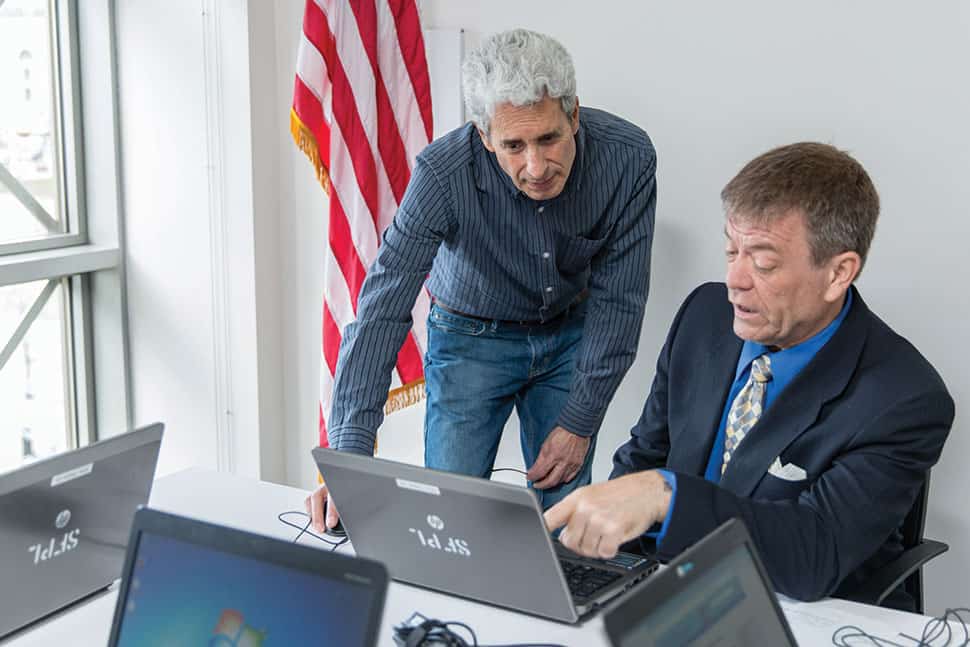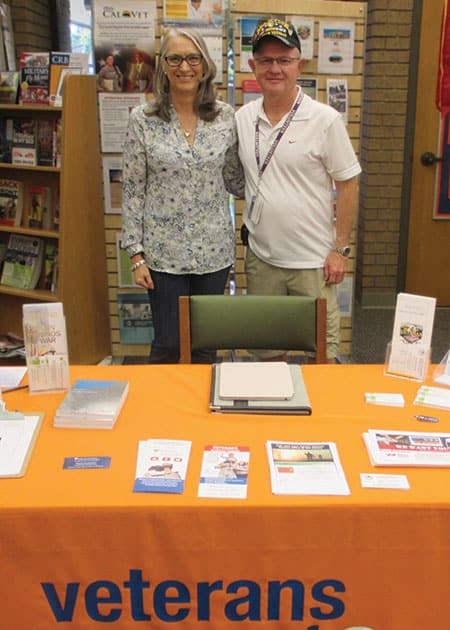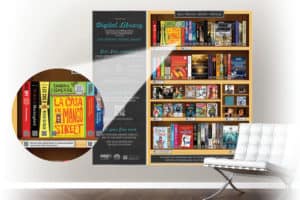
Novato Public Library, located in a small town in the North Bay region of the San Francisco Bay Area, has become a meeting place for military veterans. That’s thanks to a four-year-old California public library program called Veterans Connect @ the Library, which helps put veterans in touch with benefits and services.
At Novato, for example, one retired Air Force officer who volunteers at the library has become someone whom vets can not only get information from but can also communicate with, according to Kevin Graves, a Bay Area coordinator with the California Department of Veterans Affairs.
“Vets come in every week just to speak to him, sometimes just to talk,” Graves says. “He gets something out of it, they get something out of it; it’s a win-win.”
In some areas of the state, Veterans Connect is essential for former service members who do not have easy access to a veterans services office.
The US Census Bureau estimates that nearly 1.8 million military veterans called California home between 2011 and 2015, giving the state the distinction of having the largest veteran population in the country. More than 10,000 of them live in Merced County, population 268,455, in northern San Joaquin Valley, about three hours southeast of San Francisco.
Amy Taylor, Merced County librarian, says it can take veterans in the city of Los Banos two and a half hours by bus to get to the nearest veteran’s services office in the city of Merced. “A single appointment can take six hours out of a person’s day,” she says.
It’s a problem not just in Merced County but across California and the nation, according to Karen Bosch Cobb and Jacquie Brinkley, project advisors with Pacific Library Partnership, which is collaborating with the state on the groundbreaking program that is providing veterans with access to services at California public libraries.
Spearheaded in 2012 by the California Department of Veterans Affairs in partnership with the California State Librarian and the Institute of Museum and Library Services, the Veterans Connect @ the Library program has grown to 51 locations, and organizers already are providing information on how to set them up elsewhere in the US, according to Brinkley.
Los Banos Library is one of the recent additions to the Veterans Connect program that Cobb and Brinkley are overseeing. Launched in November, the program in Los Banos not only provides veterans with dedicated computers, books, forms, and other information, but also with librarians trained to connect them to a myriad of resources available to them, Taylor says.

The Veterans Connect website offers webinars and other online tutorials, as well as information for library staffers and volunteers to learn more about assisting veterans with health, housing, employment, education, and other benefits. In Los Banos, three staff members and two volunteers have completed the training, Taylor says.
Cobb says the training is an introduction to key concepts of searching for resources for veterans through the California Veterans Resource Book and other materials.
“We started advertising it before the opening in November, and we’re getting a good reaction from the community; veterans are coming in and asking questions and using the resources,” Taylor says.
It’s the story you’ll hear from other libraries that have implemented the program, according to Cobb, who noted that since its inception Veteran’s Connect has served some 16,000 veterans and their families.
The veteran resource centers cost about $10,000 to set up—primarily staff costs, computers, library materials, speakers, and other expenses—but half of the 51 centers in California have become self-sustaining after about two years, Brinkley says.
“It doesn’t take much after they get the initial start-up going,” she says. “It’s designed to be a volunteer-driven program with a library contact person.”
And the program goes further than just helping veterans find access to information, according to Cobb. She says the program aims to build bridges between veterans groups and the library to further grow their resources and opportunities for helping the veteran population.
“Staff have to be passionate and want to serve vets,” she says.
Different programs aimed at helping vets exist at libraries around the country, but the success of the Veterans Connect program is attracting attention from other states with large veteran populations. Other programs that have launched outside of California include:
- Pierce County (Wash.) Library System’s program that trains veterans in Microsoft certification
- West Virginia University Libraries’ program to create library tools to put veteran students in touch with resources
It’s still in the planning stages, but Cobb says the California state program is considering a multistate rollout of the Veterans Connect program. “We have a really solid framework that we can … share with [other states],” she says.
Graves says the California Department of Veterans Affairs is always looking for new ways to reach out to former service members, and Veterans Connect is providing inroads its founders couldn’t have imagined. “It does fill a gap,” he says. “The more venues and organizations we get involved, the more veterans we’re going to reach.”



For a national overview of library services to veterans see:
Roy, L., Barker, M., Hidalgo, L. L., & Rickard, F. A. (2016). Public Library Services for Veterans: Selected Brief Case Studies. Public Library Quarterly, 35(3), 222-242.